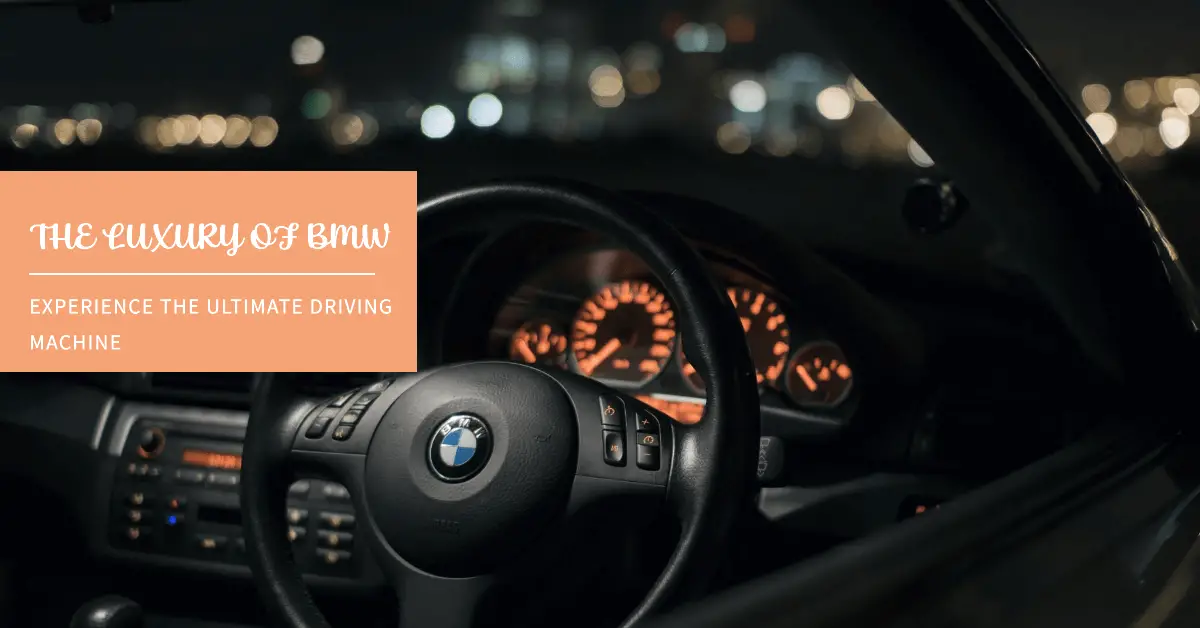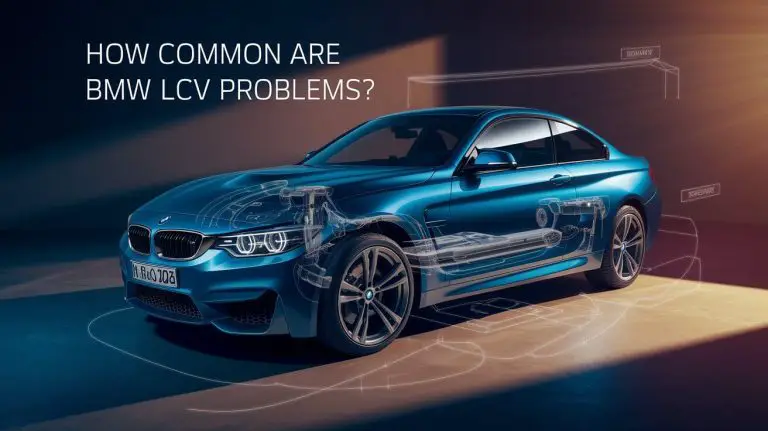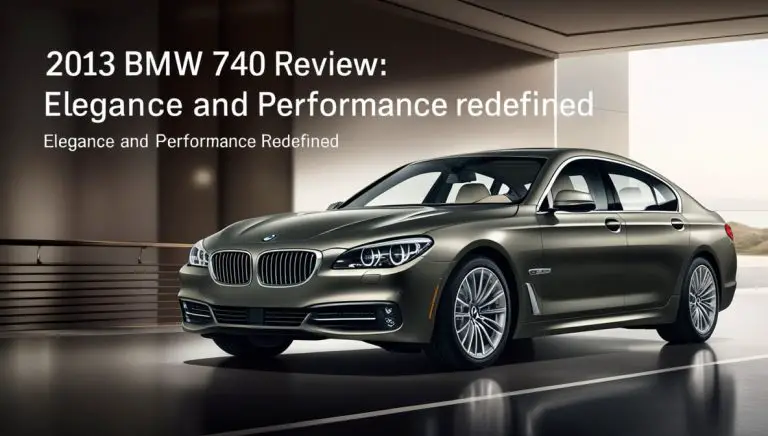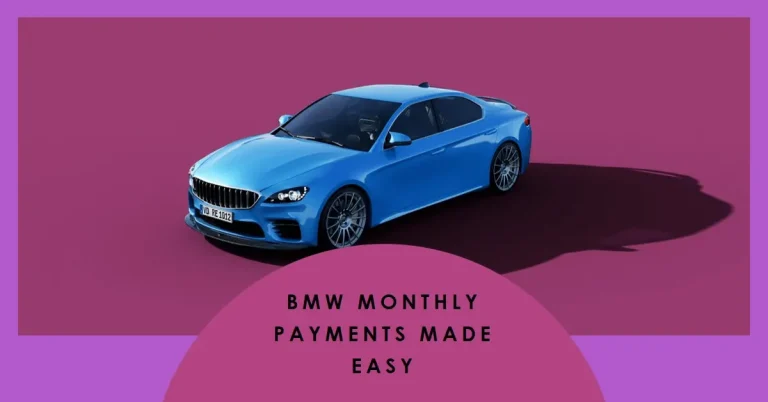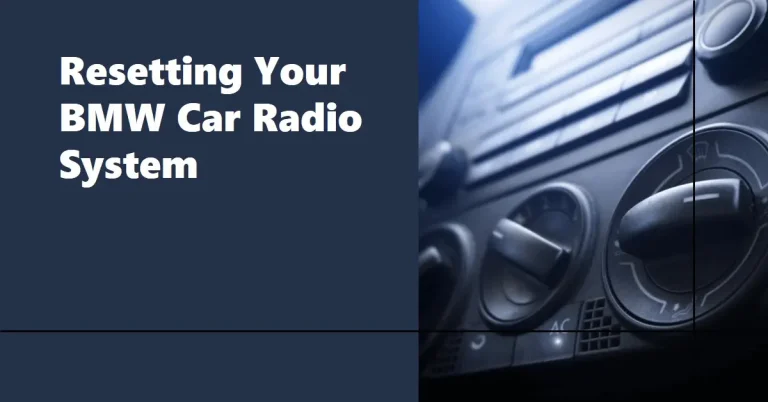Is BMW a Luxury Car? A Clear Answer with Knowledgeable Insights
BMW has long been associated with luxury and performance, producing coveted luxury vehicles alongside its core lineup of sporty sedans and SUVs. But does BMW truly compete with the top luxury car brands like Mercedes-Benz and Lexus, or is it more of an aspirational premium brand? Is BMW a true luxury car brand?
BMW has an intriguing history and positioning that complicates this question. While models like the 7 Series sedan and X7 SUV include the latest technology and amenities expected from a luxury vehicle, most BMW models overlap with more mainstream premium brands. Let’s examine BMW’s reputation, pricing, features, quality, and ownership experience to determine if BMW deserves to be considered a true luxury automotive brand.
The History and Reputation of BMW
BMW, which stands for Bayerische Motoren Werke (Bavarian Motor Works), has its roots as an aircraft engine manufacturer starting in 1916. After World War I, BMW transitioned into building motorcycle engines and eventually its first automobiles in the late 1920s and early 1930s.
From these early days, BMW established itself as a performance-oriented brand. The 328 sports car that debuted in 1936 showcased the brand’s potential for combining luxury and sportiness. This tradition continued after World War II with luxurious but agile sedans like the 501 and sporty little Isetta microcars.
By the 1960s, BMW introduced the model that would define its identity – the 2002. This affordable sport sedan demonstrated BMW’s focus on superior driving dynamics and performance that put the driver first. In the 1970s, the groundbreaking 3 Series further cemented the brand’s prestige and set the standard for compact sports sedans.
For decades, BMW cultivated an image built upon performance, handling, and skillful engineering. Core models like the 3 Series, 5 Series, and 7 Series sedans projected an aspirational luxury aura while strongly emphasizing the driving experience. The brand also successfully expanded into SUVs starting with the X5 in 1999, combining BMW’s on-road prowess with luxury and utility.
Today, BMW’s reputation stems from this heritage of pairing luxury with joy of driving. The company maxim “the ultimate driving machine” encapsulates this distinct positioning in the luxury space. While not always the cushiest or most opulent vehicles, BMWs provide an engaging and dynamic experience behind the wheel. Even base models benefit from the brand’s performance mystique and upscale connotations.
BMW’s Vehicle Lineup and Pricing
The modern BMW lineup aims to be a full-fledged luxury brand by competing across all vehicle segments:
- Luxury sedans – The flagship 7 Series sedan with a base price around $100,000 directly engages the Mercedes S-Class, Audi A8, and Lexus LS. The midsize 5 Series starts around $55,000 overlaps with the Mercedes E-Class and Audi A6.
- Sports cars – The 6 Series Grand Touring and 8 Series Coupe and Convertible ranging from $80,000 to over $130,000 take on high-end sports cars from Porsche, Mercedes, and Audi.
- SUVs – The X5 priced from $60,000 to over $85,000 competes with vehicles like the Mercedes GLE and Lexus RX. The larger X7 starts at around $75,000 rivaling the Mercedes GLS and Lexus LX.
- Compact cars – The 2 Series, with pricing in the low $30,000s, matches up against the Mercedes CLA and Audi A3 targeting younger luxury buyers.
While the flagship sedans and coupes clearly play in the luxury space, lower-end models like the 2 Series, X1, and X3 are priced similar to more mainstream premium brands like Volvo, Acura, and Lexus IS/NX models. The core 3 and 5 Series models in the $40-$60k range sit between true luxury and regular premium vehicles.
On the whole, most BMW models are positioned above mass-market vehicles in pricing but below the highest-end luxury makes like Mercedes-Benz, Porsche, and Lexus’ LS models. While not directly on par with those pricier competitors, BMWs often a carry an aspirational aura and signals a step up from a mainstream brand for buyers.
Interior Quality and Features
Slide into the cabin of a 5 Series or X5, and you immediately feel the quality BMW is known for. The interior furnishings clearly demonstrate what separates luxury vehicles from regular cars:
- Premium materials – Even base BMW models come equipped with upscale leather seating as standard. Higher trims add ultra-soft Nappa leather with contrast stitching, open pore wood trim, and aluminum tetragon accents.
- Cutting-edge technology – The latest iDrive infotainment system features a 10.5-inch digital dashboard and 12.3-inch touch display with crisp graphics and connectivity. There are also abundance of charging ports, USB inputs, Bluetooth, and available wireless charging.
- Luxury amenities – Higher-end BMW models pamper driver and passengers with 16-way power heated and cooled massage seats, four-zone automatic climate control, adjustable ambient lighting, glass controls, and premium sound systems.
- Driver-centric cockpit – The interior layout focuses on the driver with all controls oriented towards the seating position. Luxurious sport seats provide excellent lateral support for spirited driving.
However, at the lower end of BMW’s range, the interiors are not quite on par with true luxury brands. The 2 Series and base X1 and X3 have noticeably cheaper hard plastic surfaces and lack some of the opulent trimmings you’d expect in an entry-level luxury vehicle.
BMW interiors are undoubtedly a class above any mass-market brand in style and technology. But critical observers would rank the overall quality and luxury factor a small step below leading brands like Mercedes, Lexus and Genesis that offer greater attention to detail and refinement in their vehicle cabins.
Ride Quality and Comfort
In keeping with the “ultimate driving machine” ethos, BMW tunes its suspension and steering dynamics to prioritize agile handling, responsive steering, and spirited performance. Even the large luxury SUVs feel nimble and eager to change direction.
The focus on driver engagement does trade off slightly with ride comfort, however. The taut suspension doesn’t always soak up bumps as well as rival luxury vehicles. Wind and road noise are also more apparent, partly due to run-flat tires on many models. While comfortable, the ride ambience caters more towards the performance-oriented driver.
The seating and cabin spaciousness also lean more towards the driver. The excellent front seats have a wide range of power adjustments for finding an ideal position. But the rear seats and headroom can feel snug compared to larger luxury sedans and SUVs. For chauffeured luxury, the S-Class and Lexus LS superior sofa-like rear seats.
In total, the BMW driving experience provides a sportier, cockpit-focused environment compared to the serene, isolated sensation of top-tier luxury cars. But that connection to the road and confident handling are key facets of BMW’s luxury formula.
Quality and Reliability
Lexus and Porsche consistently top rankings for luxury vehicle dependability and longevity. So where does BMW stand on the quality and reliability scale?
- Industry-wide quality surveys – BMW consistently ranks above average in J.D. Power and Consumer Reports quality and dependability surveys. ItCompare favorably to Mercedes and Audi but still trails Lexus, Porsche, and Genesis.
- Longer warranty coverage – BMW provides a 4 year/50,000 mile new car warranty and 12 year rust perforation warranty. The reliability warranty terms are a year longer than most competitors.
- Perception of German engineering – Although not always quantifiable in surveys, the perception of precision German engineering adds to BMW’s reputation for mechanical quality.
- Relatively low cost of ownership – BMW maintenance costs fall in between mass-market and luxury brands. Older BMW may require more repairs, but the perception is owners get an accessible luxury vehicle without outrageous upkeep.
Overall, BMW establishes itself as a more dependable luxury brand than others like Audi, Jaguar, or Volvo. But it does not have the bulletproof, peace-of-mind reputation achieved by Lexus, Porsche, and other Japanese luxury marques. For some buyers though, the idea of accessible German luxury outweighs the risk of higher maintenance expenses down the road.
Ownership Experience
The final consideration for a luxury brand is how it treats customers throughout the ownership lifecycle. Does BMW provide a luxury experience beyond just selling a vehicle?
- Brand prestige – The BMW logo and roundel command respect and signify an elevated status. Even basic 3 Series models confer a level of prestige about their owners. The brand’s racing heritage and connection with luxury also feed this pride of ownership.
- Retail facilities – BMW dealerships and facilities provide a contemporary luxury setting befitting the brand image. Sales and service centers minimize pain points and create an overall enjoyable experience.
- Driving schools – BMW operates performance driving schools at some facilities that allow enthusiasts hands-on time with BMW’s Ultimate Driving Machines under expert guidance. This unique opportunity strengthens brand connections.
- Luxury personal services – Highline competitors like Mercedes, Lexus, and Genesis have set a new standard for highly personalized ownership experiences. BMW meets luxury expectations but does not distinguish itself with extra pampering and services.
The BMW brand image gives buyers a sense of joining an exclusive club of performance luxury vehicle owners. And dealers provide sales and servicing on par with luxury rivals. However, BMW does not match the intricate attention to customer needs outside the vehicle itself like some other high-end brands excel at delivering. But for driving enthusiasts, time spent interacting with the machines themselves matters more than luxury personal services.
Conclusion: BMW Straddles the Luxury Line
After reviewing BMW’s heritage, model lineup, capabilities, and ownership experience, does is qualify as a true luxury brand?
While BMW does not completely match the opulence and comfort levels of top-tier luxury automakers like Mercedes-Benz, Lexus, Rolls-Royce, it offers a compelling combination of prestige, performance, and refinement.
Core models like the 5 Series and X5 compete squarely in the midsize luxury space even if BMW’s pricing remains a small step below rivals. It’s also clear that BMW has invested in elevating interiors, amenities, and the ownership experience to align with luxury expectations.
However, the majority of BMW models still compete against and appeal to mainstream premium buyers cross-shopping brands like Audi, Volvo, Acura. And BMW’s driving-centric philosophy that puts engagement over isolation means the brand does not go all-in on maximizing ride comfort, quietness, and rear seat pampering like the most luxurious vehicles.
In the end, BMW straddles the line between regular and luxury with appeal to both mainstream premium buyers and true luxury shoppers. For drivers who want increased performance, handling, and driver focus over outright luxury, BMW is often the perfect fit.
The brand has cultivated an aspirational image and provides a distinctly engaging luxury experience centered around the love of driving. So while not matching the levels of opulence and refinement as the top luxury makes, BMW still qualifies as a legitimate if not top-tier luxury brand given its combination of prestige, class-leading driving dynamics, and premium amenities.

